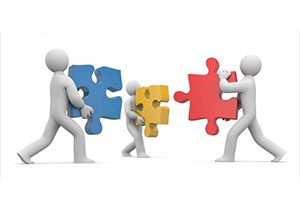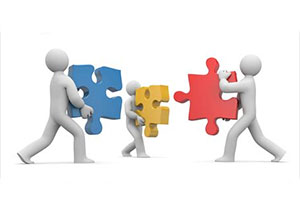 At least once a week, I receive the following phone call: “Hi there, we need to do some training in our organization, can you help with that?” The request seems like the start of a great conversation, but then it derails rapidly when I ask follow-up questions like “why” and “what kind of challenges would you like to address?” These shouldn’t be tough questions, but sadly, they often catch the prospective client by surprise.
At least once a week, I receive the following phone call: “Hi there, we need to do some training in our organization, can you help with that?” The request seems like the start of a great conversation, but then it derails rapidly when I ask follow-up questions like “why” and “what kind of challenges would you like to address?” These shouldn’t be tough questions, but sadly, they often catch the prospective client by surprise.
If medical doctors received the same kinds of requests leadership and team development coaches receive, it might look something like this:
Patient: I need some pills.
Doctor: What kind of pills?
Patient: Well, I just haven’t had any pills yet this year, so I’ll need to take some by the end of Q3.”
Patient: I’d like some pills, please.
Doctor: What would you like the pills to do?
Patient: Just something to make me better in general. I budgeted for pills and if I don’t use the budget, I lose it. Do you have a catalog of the pills you offer? What can I get for less than $3,000?
Doctor: Here’s your prescription. You’ll need to take one of these a day for 30 days.
Patient: Oh, well, I’m really busy and don’t have much time for this. Can you give me a 14-day version?
Doctor: Well, if you want it to work, then you’ll need all 30 days worth.
Patient: Hmmm…what do you have that can give me some results in 7 days?
Patient: Can you help me get healthier?
Doctor: Yes! I’ll design you a meal plan and you’ll need to do cardio 5 times a week. This will help you achieve your goals.
Patient (6 months later): Your program didn’t work.
Doctor: Did you follow the meal plan and do cardio 5 days a week?
Patient: I don’t have time for that.
Patient: I’d like you to run some tests.
Doctor: Well, your BMI is on the high side, so it would be worthwhile to test your cholesterol and blood sugar.
Patient: No, I don’t really want those kinds of tests. I’d like to focus on the best parts of my health. My blood pressure is usually great. Tell me more about that.
These exchanges sound absurd in the context of a doctor’s office, but they’re incredibly common among Leadership and Team Development coaches. Too often, organizations seek “treatment” without considering a diagnosis. Sadly, plenty of consultants are willing to accept these projects and allow organizations to “check the box” on training for the year. While the wasted time and money are bad enough, poorly planned training workshops undermine the value placed on all possible future development activities. “Pills don’t work. I took a pill one time and it didn’t do anything.”
In training/development, “patients” and “doctors” alike should beware of any request/treatment that skips the diagnosis. Employee development needs, limited training budgets, and the leadership pipeline are far too important to be left to guesswork.
Before embarking on a leadership/team development program, a skilled resource should ensure that a proper needs analysis has been completed. This process is imperative for identifying the skills gaps and development needs that are crucial for success. Further, inviting an external consultant to conduct the needs analysis can result in a more objective evaluation that uncovers hidden blind spots for leaders and HR alike.
The consultant will begin by taking a 10,000 foot view of the organization. This includes the organization’s strategy, goals, expectations, and current performance. Then they’ll work to measure current performance, including the behaviors and activities contributing to those results. This is the place where a consultant can identify key knowledge/skill gaps that are influencing outcomes. Next, the consultant may evaluate the participants themselves. Who should participate? What is their interest in (or motivation for) participating? What delivery method would work best for this group? What improvements can be expected and in what time frame? Finally, the consultant will develop a customized training strategy that adapts to the organization’s needs, closes key gaps for critical team members, includes opportunities for action learning and reflection, and establishes a method for assessing the success of the intervention.
If you wouldn’t trust a doctor who prescribed pills without a medical assessment/diagnosis, then you should also never trust a trainer who hasn’t conducted a basic needs analysis before sending you a development proposal.

